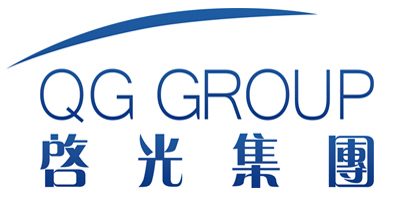Zinc isooctanoate Alias: zinc octanoate, zinc 2-ethylhexanoate.
English name: zinc octoate ; zinc 2-ethylhexanoate; zinc caprylate.
Molecular formula is C16H30O4Zn, molecular weight is 351.8. CAS number is 136-53-8.
Structural formula:

Physical and Chemical Properties
Pure or highly concentrated zinc isooctanoate is a pale yellow viscous liquid with a theoretical zinc mass fraction of 18.6%. Due to the viscosity of pure zinc isooctanoate, it is not conducive to operation, and generally can be used as a plasticizer to formulate a certain concentration of solution.
Characteristics and Uses
This product has excellent storage stability, and compared with traditional zinc naphthenate, it has the characteristics of light color, low odor and high content. It has good characteristics when used in light-colored paints, which can reduce the color of the paint film and improve the luster, and is an upgraded product of zinc naphthenate. It can be used as catalyst for aliphatic polyurethane coatings and elastomers, which can promote cross-linking and shorten curing time. Its toxicity is much smaller than that of lead isooctanoate and it can partially replace lead isooctanoate. Catalytic activity is lower than lead isooctanoate. The recommended dosage is 0.03% to 0.2% (metal to resin solids).

Cutting fluid wastewater treatment is introduced!
Cutting fluid and emulsion
Cutting fluids are divided into two main categories according to the chemical composition of the oil: non-water-soluble (oil-based) fluids and water-soluble (water-based) fluids. Water-based cutting fluid can be divided into emulsion, semi-synthetic cutting fluid and synthetic cutting fluid.
And emulsion should be a type of cutting fluid, emulsion components generally include: 1, water; 2, base oil (mineral oil, vegetable oil, synthetic esters or their mixtures); 3, surfactants; 4, rust additives (zinc naphthenate, sodium petroleum sulfonate that is, emulsifiers, barium petroleum sulfonate, benzotriazole, sorbitan monooleate, aluminum stearate); 5, extreme pressure additives (containing sulfur, phosphorus, chlorine and other elements); 6, polar compounds); 5, water-based cutting fluid and water-based (water-based) fluid. Polar compounds containing sulfur, phosphorus, chlorine and other elements); 6, friction improver (friction reducer or oil additives); 7, antioxidants.
Cutting fluid (emulsion) role and hazards
1, lubrication, the cutting process to form part of the lubricating film, thereby reducing the cutting force, friction and power consumption, reduce the surface temperature of the tool and workpiece blank friction parts of the surface temperature and tool wear, and improve the cutting and processing performance of the workpiece material.
2, cooling effect, the cooling effect of cutting fluid is through it and due to cutting and heat of the tool (or grinding wheel), chips and workpiece convection and vaporization between the cutting heat from the tool and the workpiece to take away, so as to effectively reduce the cutting temperature, reduce the thermal deformation of the workpiece and tool to maintain the hardness of the tool to improve the machining accuracy and tool durability. Oil-based cutting fluid has better lubrication performance and poorer cooling effect. Water-based cutting fluid compared with oil-based cutting fluid, lubrication performance is relatively poor, the cooling effect is better.
3, cleaning effect, in the metal cutting process, the cutting fluid is required to have a good cleaning effect.
4, rust prevention and other secondary effects.
CNC machine, milling machine, drilling machine, sawing machine and other machining equipment are inseparable from the cutting fluid (emulsion). However, waste emulsion and cutting fluid are hazardous wastes (HW09 category). As the chemical composition of emulsion mainly includes water, base oil (mineral oil, vegetable oil, synthetic ester or their mixtures), surfactants, antirust additives (zinc naphthenate, sodium petroleum sulfonate that is, emulsifiers, barium petroleum sulfonate, benzotriazole, sorbitan monooleate, aluminum stearate), extreme pressure additives (polar compounds containing sulfur, phosphorus, chlorine, etc.), friction improvers (friction reducer or oily), antioxidants and other additives. Additives), antioxidants and other chemical components, each of which plays a role in producing good results and hazards are different, of which some chemical components not only bring certain pollution and impact on the environment, but also directly jeopardize the physical health of employees.
In daily work, if the field staff often appear dry skin, cracks, redness, dermatitis, itching, dizziness, insomnia, dreams, shortness of breath, shortness of breath, coughing, rhinitis, gastric perforation, peritonitis, kidney damage, weakness in all four limbs, memory loss, thinking and judgment ability to reduce the dental erosion, chronic bronchitis, emphysema, pulmonary sclerosis, etc., in fact, is the emulsion of a certain toxic element caused by.

Cutting fluid (emulsion) daily management focus on controlling a few points
1、Strictly control the source of incoming goods to ensure that the cutting fluid (emulsion) products are qualified;
2, for the staff issued emulsion use and prevention manual and issued dust masks, overalls, special protective gloves, protective eyes and other protective tools, at any time to prevent the occurrence of hazards;
3、Daily inspection of emulsion storage and use, and timely handling of leakage points;
4、Make emergency disposal plan for leakage, fully equipped with emergency supplies, and conduct regular emergency training and drills.

